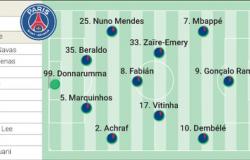After a new cut of the rate reference of the Central Bank, yesterday lowered it from 70% to 60% nominal annual, the banks immediately applied reductions to the returns they offer to their clients for their deposits to fixed term within 30 days. In line with the monetary authority’s reduction, the country’s main ten banks reduced their rates by around 10 percentage points.
A quick survey by this medium of the rates offered by the 10 largest banks in the country in terms of deposits showed an average decline similar to that decided by the monetary authority in the nominal annual rate for 30-day deposits. This cut took place this morning, and comes on top of a series of setbacks that resulted from monetary policy decisions and the elimination of the rules that put a floor on the yield that financial entities could pay.
Most entities began to pay around 50% annual nominal value for 30-day placements
If on March 12, the first day of free rates, the yields of retail fixed terms fell by up to 40 percentage points, yesterday they added 10 more points to a trend that was already gradually reducing its numbers.
Infobae developed a simulator to estimate the new performance. It allows each user to enter the amount they wish to invest and, in addition, the rate offered by their bank.
See more!
Now, among the 10 main Argentine banks, the average rate is practically balanced at 50% annual nominal, that is, an effective monthly yield of 4.11% which translates, to give an example, into a fixed term of $100,000 after 30 days of placement, results in $104,109.59 of capital plus interest.
This is the rate paid by each of those ten banks. For now the differences between bank and bank are very small, according to data collected from their home banking and mobile apps:
Since taking office last December, the Minister of Economy Luis Caputo It insists on maintaining negative interest rates in real terms, that is, they offer a return that is not enough to compensate for the loss in the purchasing power of money due to inflation.
In December, the BCRA cut interest rates 30 day fixed term deposits from 133% to 110% annual nominal. And at the beginning of March it lowered the reference rate and eliminated the rate floor that it imposed on banks for their deposits. At the beginning of this month, a new cut took the reference rate to 70% and, yesterday, a new cut was applied to bring the reference rate to 60% nominal annual rate. There are already four casualties since the change of Government.
The strategy, just one of the tools of a broader approach, seeks to prevent the BCRA’s remunerated liabilities (the famous Leliq, first, and after the disarmament of the stock of these papers, the passive repos) from generating endogenous issuance of money by paying returns that make the monetary mass grow at a rate greater than inflation, among other objectives.
As the performance of fixed-term deposits depends largely on what the BCRA’s monetary liabilities pay to banking entities, the result obtained by savers for fixed terms plummeted.
However, the initial macroeconomic scheme of the Caputo administration did not fail to generate paradoxical situations. Despite losing by far against inflation, fixed terms in pesos ended up being an interesting strategy measured in dollars. As the free dollar and the financial quotes of the currency lost in dollars, savers who stayed in fixed terms recorded monthly profits of around 30% per month.






